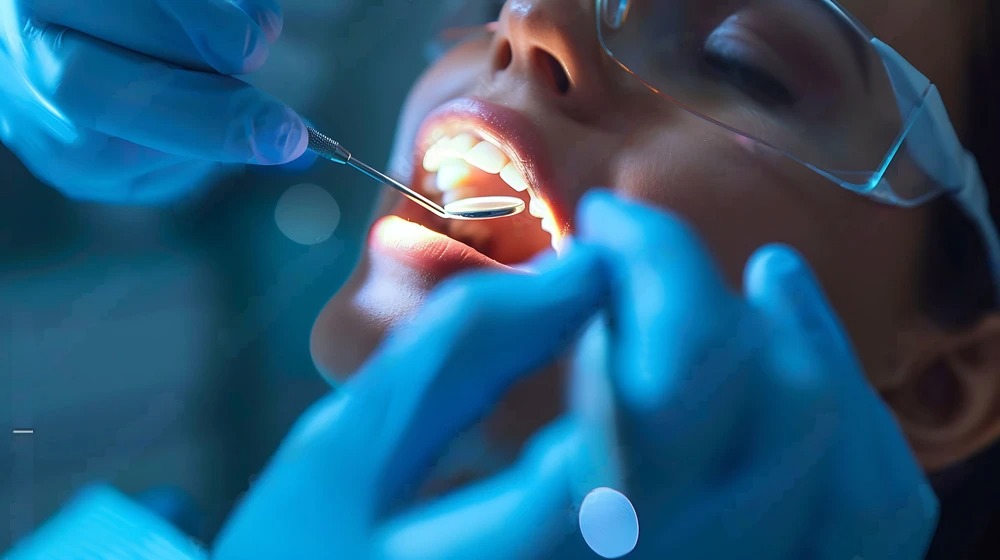
How to Differentiate Cavity Pain from Root Canal Pain
-By Dr Pauravi Hegde MDS
Hello there! I’m Dr Pauravi Hegde MDS, an experienced dentist practicing in Mumbai, and I often hear patients ask, “How do I know if my toothache is just a cavity or something serious like a root canal?” It’s a great question—and one that can spare you plenty of worry if you understand the key differences. If you live in Sion, Chembur, Prabhadevi, Worli, King’s Circle, or Chunabhatti, you’ll know how life here can be hectic, filled with tempting street food and sugary chai breaks. All these factors can impact your oral health, and it’s easy to overlook small warning signs until they become big problems.
In this article, we’ll walk you through what cavity pain usually feels like, how it differs from root canal pain, and when you should seek professional help. Trust me—knowing these differences can save you a lot of stress (and possibly some money)!
1. Introduction
Why Are We Talking About Toothaches?
You might be thinking, “Toothaches are toothaches—pain is pain, right?” Not exactly. A cavity and a root canal infection (where the tooth’s nerve is compromised) often present with distinct symptoms. However, it’s easy to confuse them if you’re not aware of the nuances. Delaying treatment because you mistakenly think it’s “just a small cavity” could lead to a full-blown root canal scenario—or worse.
Anecdote: I had a patient from Worli who brushed off mild tooth sensitivity for a year, assuming it was a simple cavity. By the time she visited me, the decay had reached the pulp, and she needed a root canal. Had she come earlier, a quick filling would’ve been enough!
2. Understanding the Basics: Cavity vs. Root Canal
What Is a Cavity?
A cavity is essentially a small hole in the tooth—caused by bacteria, plaque, and often too much sugar (like those extra helpings of gulab jamun or sweet cutting chai). Cavities start on the enamel or dentin and can progress if left unchecked. Usually, cavities are resolved with a filling.
What Is Root Canal Involvement?
A root canal infection implies the decay or damage has reached the innermost part of the tooth, the pulp, which contains nerves and blood vessels. At this stage, you often need a root canal treatment to remove the infected pulp and save the tooth. It’s a more involved procedure than a simple filling.
Why the Confusion?
Both a cavity and a root canal issue can cause discomfort—pain, sensitivity, or throbbing. Plus, not everyone experiences symptoms the same way. But certain clues can guide you to figure out which category you fall into, so let’s explore them.
3. Common Symptoms of Cavity Pain
1. Localized Sensitivity
If you’re feeling a sharp or mild discomfort when munching on sweets, sipping hot chai, or biting into cold ice cream, that’s a sign of cavity pain. Typically, this goes away quickly after you remove the trigger. Think: “Ouch!” when you bite, but relief soon after.
2. Visible Holes or Spots
Sometimes you might see the cavity. It can look like a dark spot, a small pit, or a yellowish area on the tooth surface. It’s not always easy to spot without a mirror and good lighting, but cavities often form in crevices where the toothbrush can’t reach.
3. Occasional Throbbing
If the cavity is deeper, you might get mild throbbing. However, it’s usually not the kind of pain that keeps you up all night. Some patients say, “Doc, I get this quick twinge during my lunch break, but it stops by the time I’m back at my desk.”
4. No Major Gum Involvement
Unless the cavity is advanced, you typically don’t see a pimple-like bump or serious swelling on the gums. Sure, the gums can be a bit irritated if food gets lodged, but severe redness or puffiness is uncommon in basic cavities.
4. Indicators That Pain May Be Root Canal Related
1. Persistent, Lingering Sensitivity
Root canal-related pain is often described as lingering. If a sip of cold water causes a wave of pain that sticks around for minutes (not just seconds), that’s more concerning. You might find that the discomfort stays even after you spit out the cold drink.
Anecdote: A fellow from Chembur complained he couldn’t even enjoy cutting chai because after each sip, the throbbing in his tooth lasted well beyond finishing the cup. He was popping painkillers daily—classic sign the nerve is involved.
2. Night-Time Ache or Spontaneous Pain
If your tooth wakes you up in the middle of the night, or you get sudden spikes of pain with no apparent trigger, that’s a big red flag. It suggests something deeper—like an infected pulp.
3. Gum Swelling, Discoloration, or Pimple-Like Bump
A tooth needing a root canal often brings out gum swelling or a boil (abscess) on the gums near that tooth. The tooth might also turn a grayish or dark color if the nerve is dying.
4. Severe, Consistent Throbbing
If you’re rummaging around your medicine cabinet for pain relief multiple times a day, and the pain doesn’t subside with basic remedies, you might be dealing with root canal territory.
5. Overlapping Symptoms & Why They Occur
Pain Scale Differences
- Cavity: Pain usually ranges from mild to moderate, and it’s quite dependent on triggers (sweets, temperature changes).
- Root Canal: Pain often escalates to a nagging, ongoing ache that can be severe, affecting your daily life—like commuting from Chunabhatti to Prabhadevi could become a nightmare if you’re dealing with constant tooth pain.
Sensitivity Overlap
Both a cavity and a root canal issue can cause hot/cold sensitivity. The difference lies in the duration of pain after the stimuli. Cavities typically cause short bursts; root canal issues linger or intensify.
Possible Infections in Both Cases
A deep cavity can lead to infection, and an infected tooth can present signs similar to a large cavity. So if a cavity is neglected long enough, it basically graduates into a root canal situation.
6. Diagnostic Steps a Dentist May Take
1. Visual Examination & Dental History
When you visit me, Dr Pauravi Hegde MDS, I start by checking your tooth for decay, old fillings, fractures, and gum condition. I’ll ask about your food habits (excess sugar or frequent snacks?) and any recent trauma (like biting hard on a seed).
2. X-Rays or Digital Imaging
Digital X-rays help us see what’s hiding: small cavities between teeth, deep infections near the root, or bone changes indicating an abscess.
3. Pulp Vitality Tests
We use a cold or electric test on the tooth to see if the nerve is alive. A healthy tooth recovers quickly from the shock; an infected or dying nerve might not respond or cause lingering pain.
4. Percussion & Palpation
Sometimes I’ll tap the tooth gently or press on the gums to see if there’s localized pain. A root canal issue often makes the tooth sensitive to tapping; a simple cavity might not react as strongly.
7. Treatment Options: Cavities vs. Root Canal
1. Cavity Treatments
- Dental Fillings: We remove the decayed portion and fill it with composite or amalgam.
- Inlays/Onlays: If the cavity is larger (especially on chewing surfaces).
- Preventive Sealants: For those deep fissures on molars—useful if you love spicy snacks in Sion or a sweet roti in Chembur.
2. Root Canal Treatment
- Cleaning Infected Pulp: We remove the damaged pulp, disinfect the canal, then seal it with a filling.
- Crown: Often, a crown is recommended to reinforce the tooth afterward, especially if much tooth structure is lost.
- More Extensive: Takes longer than a filling, but it can save the tooth from extraction.
3. Possible Overlap
A tooth that started with a cavity can end up needing a root canal if decay reaches the nerve. That’s why early visits are so important—a small filling is way simpler and cheaper than a full-blown root canal.
8. Prevention & Care Tips
1. Regular Check-Ups
Aim for 6-monthly cleanings. Yes, life in Mumbai is busy, but skipping check-ups is how small cavities become big nightmares. Whether you’re in King’s Circle or Worli, find a local dentist so traffic doesn’t become an excuse.
2. Thorough Oral Hygiene
- Brush Twice Daily: Use fluoride toothpaste, and spend at least two minutes on all tooth surfaces.
- Floss: It’s non-negotiable if you want to prevent cavities between teeth.
- Mouthwash: An antibacterial rinse can help if you’re prone to frequent cavities or gum issues.
3. Dietary Choices
- Limit Sugary Snacks: Gulab jamun, jalebi, soft drinks—enjoy them in moderation.
- Rinse or Drink Water: If you can’t brush right after eating, at least swirl water around in your mouth.
4. Act on Early Signs
- Mild Sensitivity: Book an appointment if it persists beyond a week.
- Small Chip or Crack: Get it sealed or filled before bacteria sneak in.
- Regular Observations: Check your teeth in the mirror sometimes. Catching a small pit or dark spot early can be a game-changer.
9. When to Consult Your Dentist Immediately
1. Severe, Unrelenting Pain
If you’re up at midnight, pacing around with an ice pack on your cheek, it’s time for urgent help. Don’t ignore it—an abscess may be forming.
2. Swelling or Gum Boils
A bubble on the gum typically means infection is present. Antibiotics alone won’t fix the root cause if the nerve is involved.
3. Difficulty Chewing or Opening Mouth
This could mean infection is spreading. Immediate attention is crucial to prevent further complications.
4. Persistent Pain After Home Remedies
If saltwater rinses or OTC painkillers only give brief respite, stop delaying. The longer you wait, the more intense the treatment might need to be.
10. Conclusion
Recap of Key Points
- Cavity Pain: Mild to moderate, triggered by sweets or temperature changes, and usually subsides quickly.
- Root Canal Pain: More severe, lingers even after removing hot/cold stimuli, often accompanied by spontaneous throbbing or gum swelling.
Encouragement for Early Detection
If you suspect a cavity, don’t wait. A quick filling can prevent a bigger problem like a root canal. And if you’re experiencing intense, lingering pain, night-time aches, or gum bumps, it’s likely beyond a simple cavity.
Modern dentistry has come a long way. Whether it’s a filling or a root canal, rest assured we can make the procedure comfortable and relatively quick. I, Dr Pauravi Hegde MDS, always suggest that knowledge is power—knowing what your symptoms mean can help you act swiftly and avoid major complications. So if you’re in Sion, Chembur, Prabhadevi, Worli, King’s Circle, or Chunabhatti and experiencing tooth pain, schedule an appointment to get clarity and relief.


WhiteRock Dental Clinic
807 B, Lodha Supremus, New Cuffe Parade, Wadala East, Mumbai 400037, India
All content on this blog is copyright © 2024 by whiterockdental.in. Unauthorized reproduction or distribution is prohibited. For inquiries, please contact us via our website.
